Key points
- This report describes CFA's progress using data science to improve our national public health capability to respond to disease threats.
- Moving forward, CFA will improve, create, and continue to share our tools, so decision-makers can quickly respond to public health emergencies.
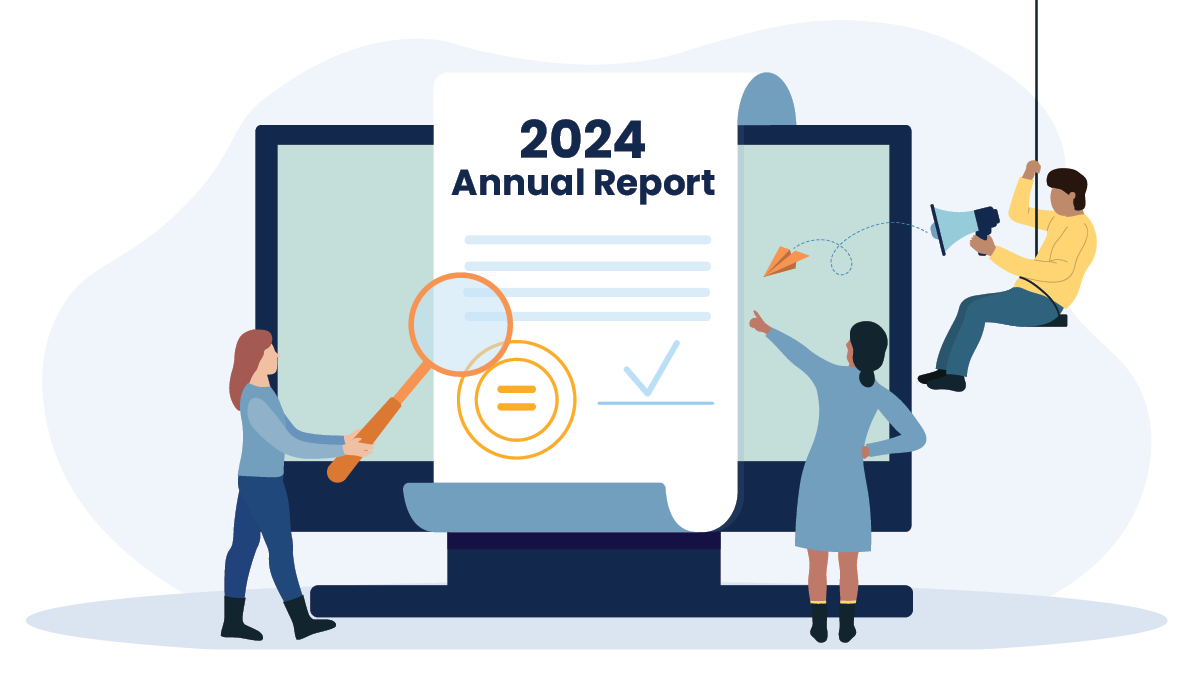
Introduction
The Center for Forecasting and Outbreak Analytics (CFA or Center) is working to make infectious disease outbreak forecasting as routine as weather forecasting. This includes creating new capabilities to forecast the behavior of infectious disease outbreaks and share information with government and public health leaders at all levels, empowering people to save lives and protect communities from health threats.

In 2023, CFA established four goals to guide the organization towards becoming a trusted, go-to source for information during disease outbreaks:
- PREDICT: Deliver actionable analysis and response-ready modeling tools.
- INFORM: Generate practical decision support products.
- INNOVATE: Drive technological and analytic innovation.
- ADVANCE: Build a world-class forecasting and outbreak analytics organization.
These goals focus on establishing and sustaining new public health and national security capabilities. They also guide the establishment of early-warning and forecasting systems that will bolster the nation's ability to respond to infectious disease threats. This report provides an update on CFA's progress in implementing these goals—creating models, forecasts, and tools and driving the kind of technological and analytic innovation the nation needs for better public health response.
Goal 1 - Predict
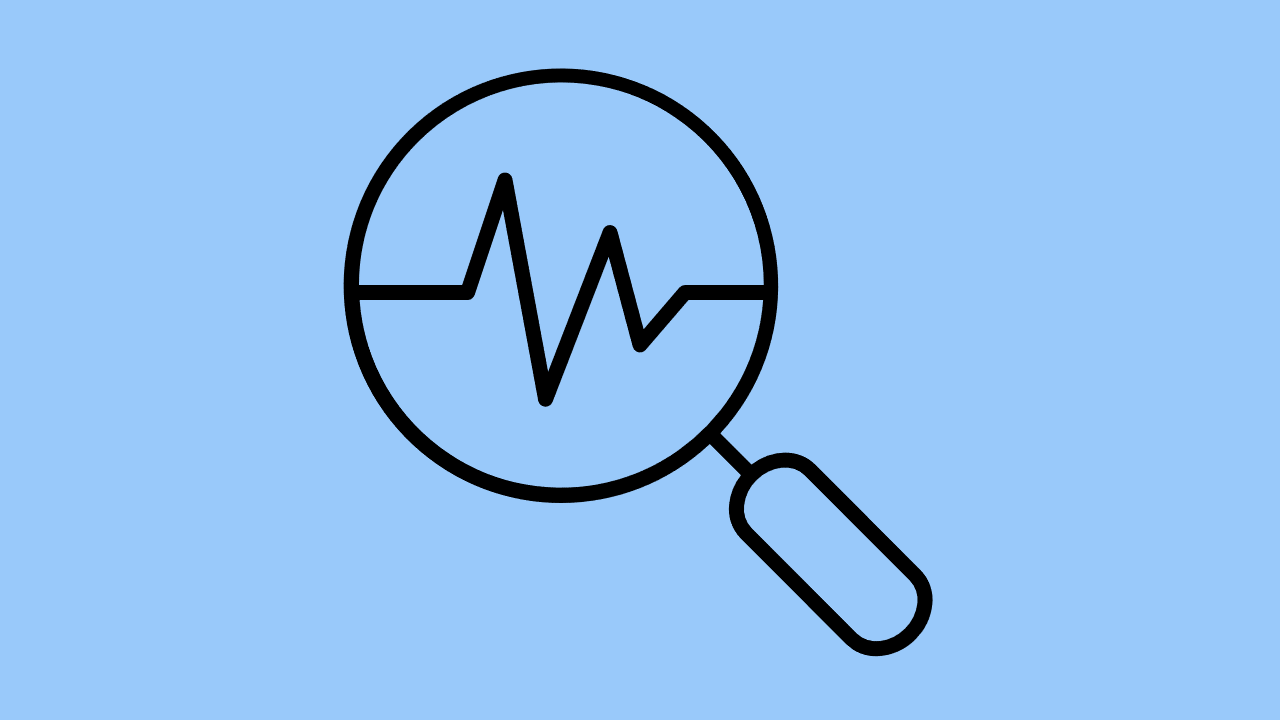
CFA is delivering analyses and response-ready modeling tools by:
- Building, testing, and improving open-source models and tools
- Collaborating with CDC programs to put models in routine practice
- Providing analyses for emergent responses
Growing a seasonal influenza forecasting capability - In 2023, CFA began releasing bi-weekly national and state-level forecasts for seasonal influenza. Previously, the CDC relied on models created by researchers outside of the agency to do this. Now, CFA is providing internal capabilities for CDC to produce high-performing disease forecasts during outbreaks.
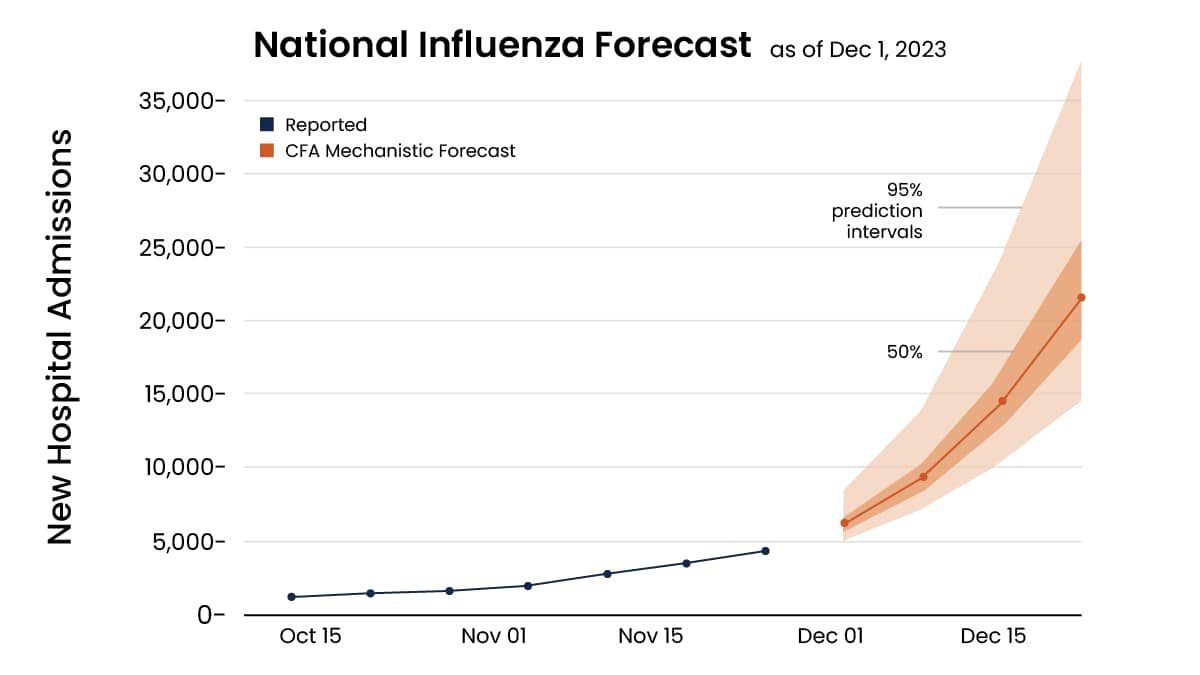
Estimating how fast pandemic-prone diseases are spreading – CFA worked with CDC's National Center for Immunization and Respiratory Diseases (NCIRD) to create the agency's first state-level disease growth estimates for COVID-19 and influenza. These models show public health decision-makers whether infections are increasing or decreasing, so they can plan and prepare healthcare systems for seasonal changes or surges in hospitalizations.
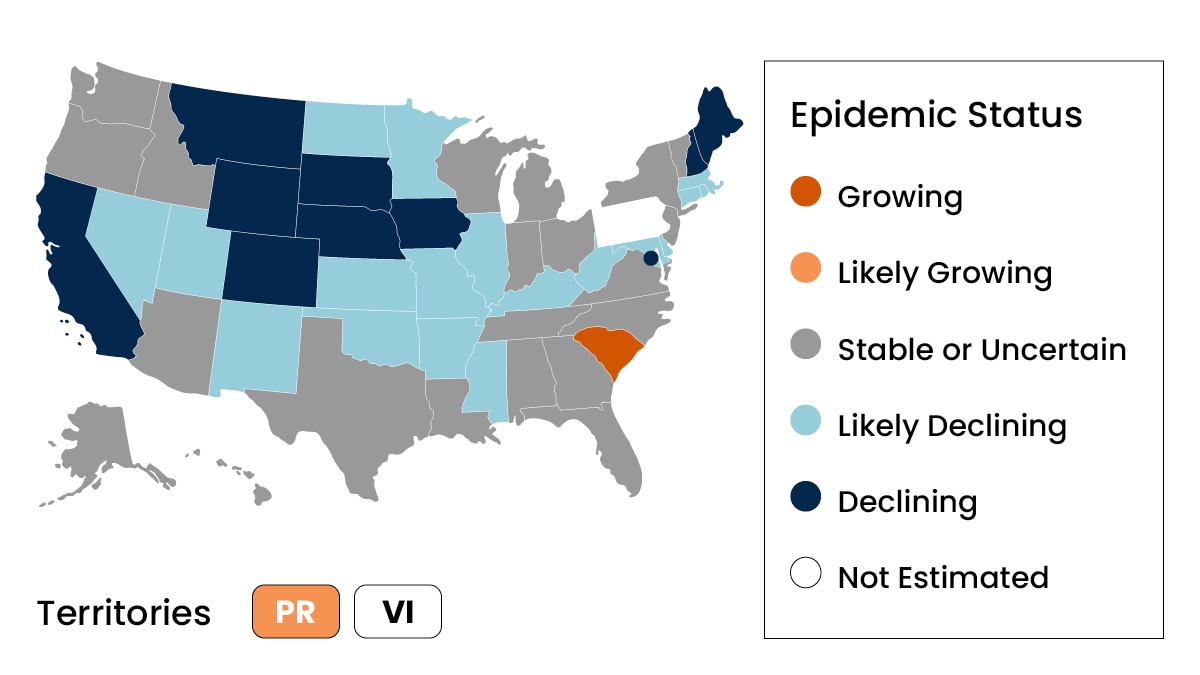
Improving the efficiency of CDC COVID-19 forecasting – CFA reconfigured COVID-19 ensemble forecasts, making them more robust, efficient, and adaptable. Now the modeling tools run ten times faster, automatically scan each input for quality and completeness, and can be accessed by multiple analysts at once. These improvements mean that CDC can get better, faster forecasts to public health leaders, so they can respond more quickly.
New sources of data to create better forecasts - CFA is working to improve disease forecasting capability by incorporating new data sources into forecasting tools. For example, wastewater monitoring data has great potential to provide data on disease activity in near real-time. CFA is working to incorporate wastewater data into state-level COVID-19 forecasts, having shown that it makes them more accurate and robust. The new forecasts give public health leaders a clearer picture of possible surges in hospitalizations before they happen, so they can protect the public against respiratory diseases and strengthen infrastructure to save lives and prevent infections.
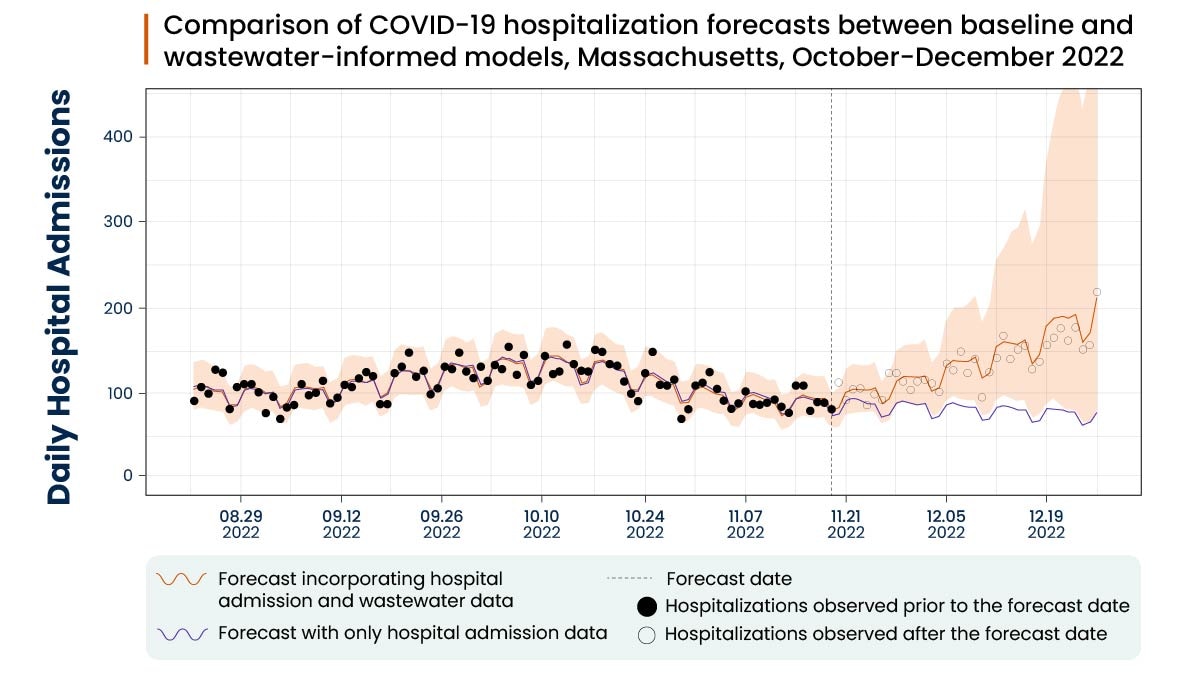
Partnership in practice
Goal 2 - Inform

CFA is generating practical decision support products by:
- Developing products with actionable insights for decision-makers
- Translating and disseminating CFA-developed analytics
- Establishing & maintaining collaborations to create and improve CFA products
Fall and winter respiratory disease season outlook - CFA used data for COVID-19, influenza, and RSV to create CDC's first respiratory disease season outlook. The outlook predicted a similar number of total hospitalizations in the fall and winter of 2023 compared to the previous season. CFA developed the outlook to support public health decision-makers, empowering them with a model of the future that integrates multiple insights together.
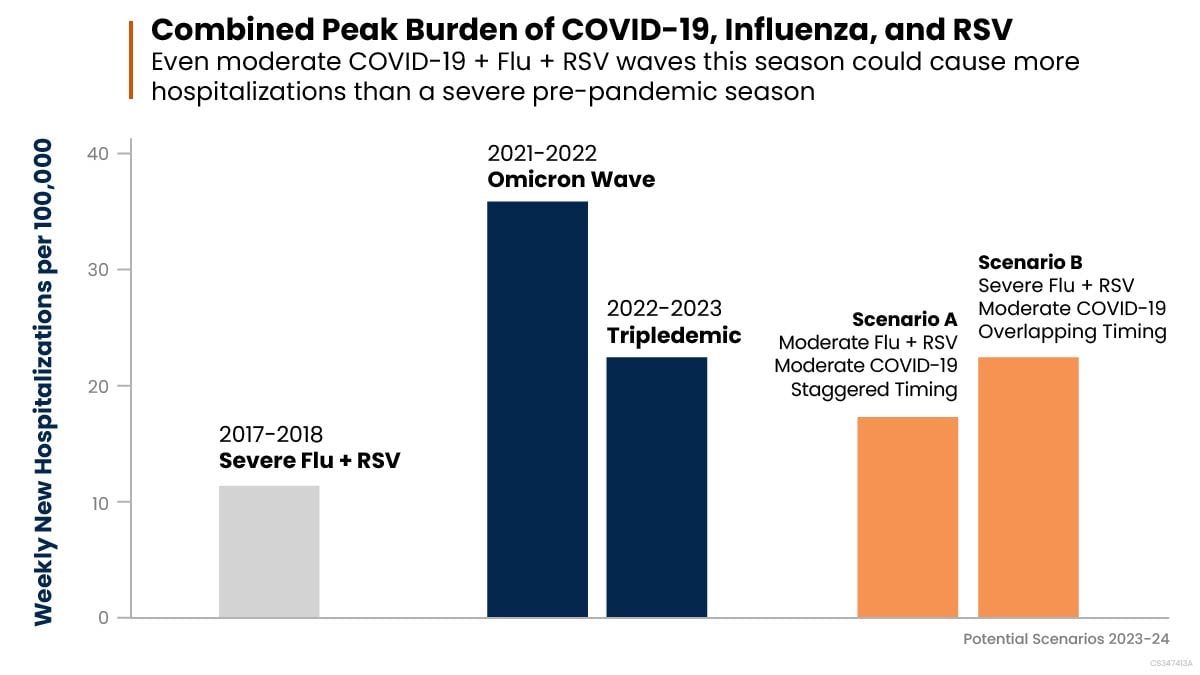
Improved scientific communication - Disease modeling can be difficult to understand. In 2023, CFA launched online resources to explain how the Center uses data science to drive analytic work. Readers can learn about how CFA uses data and data science to make predictions. CFA will continue developing resources like this as new disease forecasting tools come online, covering topics like real-time disease modeling, and incorporating wastewater data into disease forecasting.
Improved forecasting capability through partner engagement
Goal 3 - Innovate

CFA is driving technological and analytic innovation by:
- Transforming infectious disease forecasting, advanced analytics, and communication by engaging public, academic and private sector performers
- Advancing leading edge technology architecture for CFA and our partners
- Establishing technical specifications to support the flow of data and methods between CFA and collaborators
First outbreak analytics and disease forecasting network - In 2023, CFA launched Insight Net, the first national network for outbreak and disease modeling, made up of private, public and academic partners. The network will expand the CDC's capacity to support state and local public health leaders to detect, respond to, and mitigate future public health emergencies. Comprised of 13 primary awardees and more than 100 total network participants, Insight Net spans 24 states and 35 public health departments. Many critical public health decisions are made at the state and local levels. The creation of Insight Net extends CFA's impact through a more comprehensive approach that reaches state and local levels. The impact of Insight Net goes far beyond the 13 awardees by leveraging connections with state, local, private, public, and academic partners to create a consortium of collaborators. The output of the network will be better forecasting data and analytics to share with public health decision-makers, especially at the state and local level. It will also empower the American public, so they can make informed decisions to protect their communities, families, and themselves during public health emergencies.
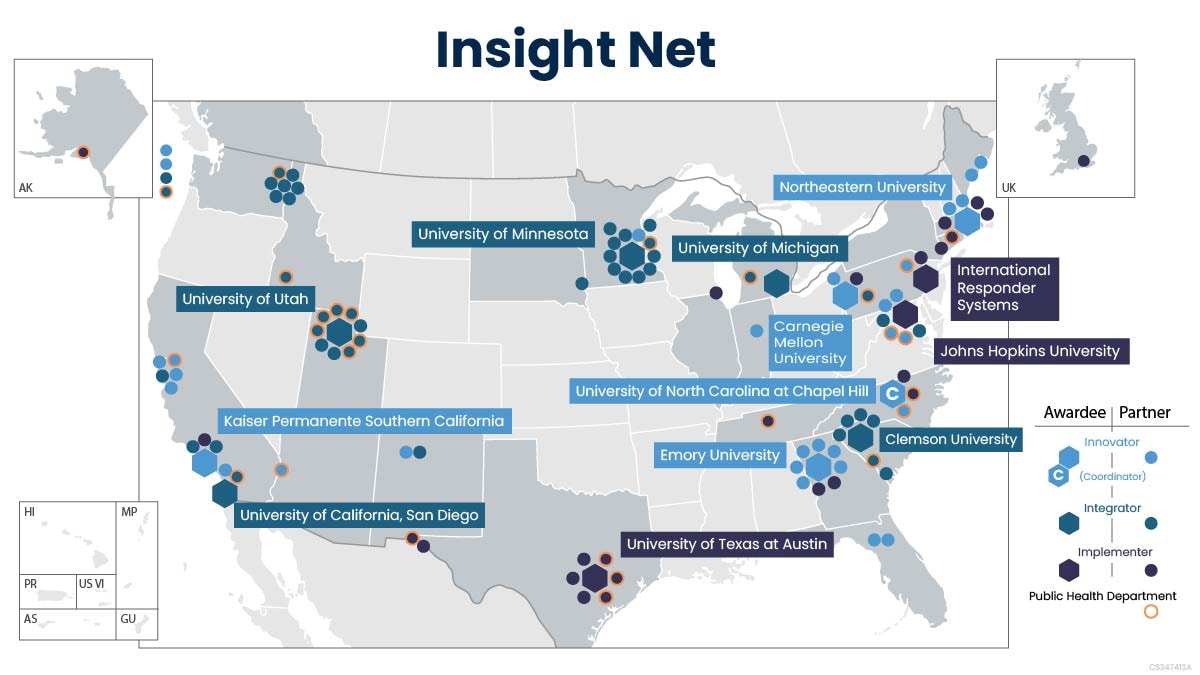
More about Insight Net – These innovators, integrators, and implementers are collaborating to develop and implement powerful tools to improve speed, accuracy, and use of data and analytics during health emergencies. They will take proven approaches directly to public health departments included within the network, with plans to expand in the years to come.
Insight Net in the news
University of Utah – "CDC Funds U-Led Initiative to Strengthen Response to Infectious Disease Outbreaks"
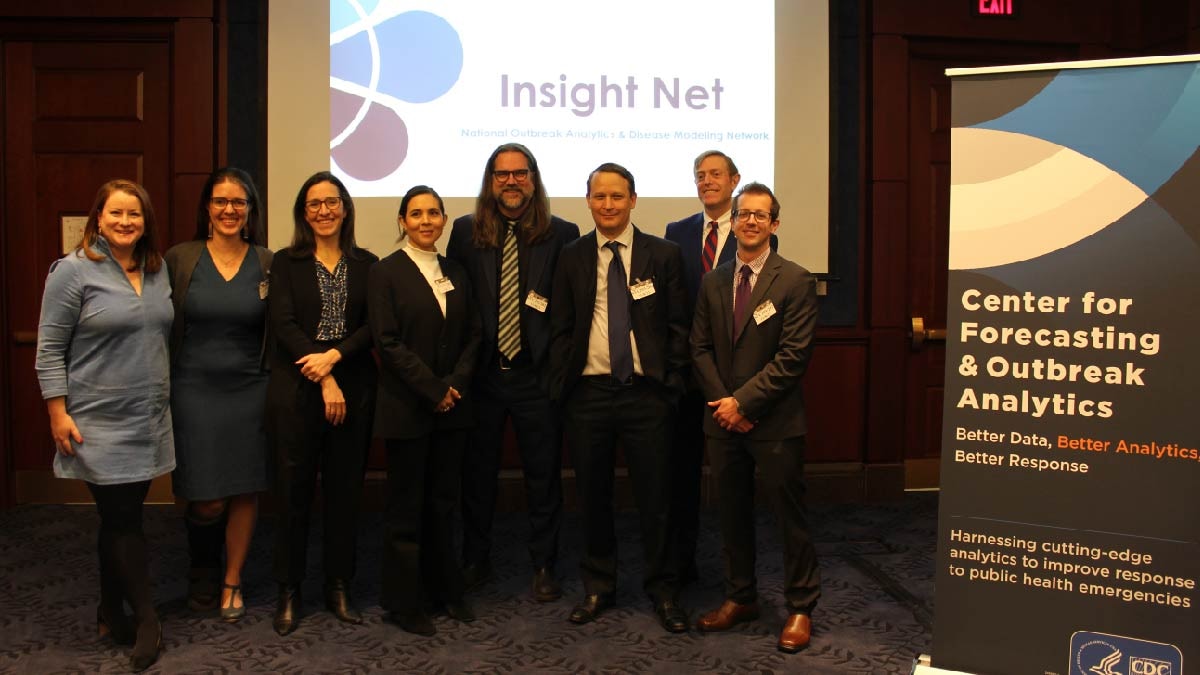
Collaboration with shared computing capability - CFA began testing the first ever virtual computer infrastructure for disease forecasting and analysis. The Virtual Analyst Platform is a network of secure analytic workspaces, making it possible for modelers to connect data sources together and collaborate in real time. It is currently accessible within the federal government. In the next year, CFA plans to expand the platform by creating custom analytic products for state and local jurisdictions to support real-time code sharing and modeling at the state and local levels.
Goal 4 - Advance

CFA is building a world-class forecasting and outbreak analytics organization by:
- Recruiting and growing a technically proficient and diverse workforce
- Fostering a culture of collaboration, innovation, transparency, and trust
Recruiting the right team to meet the mission - CFA is focused on recruiting and growing a technically skilled and diverse workforce by fostering a culture of collaboration, innovation, transparency, and trust. CFA's unique topics create opportunities for data scientists, information technologists, health communicators, epidemiologists, and fellows. By the end of 2023, CFA has filled 59% of the Center's total positions.
Thinking local, acting global – While CFA is laser focused on the mission to provide decision support at the state and local level, the Center is also partnering to support the emerging field of data-driven outbreak forecasting. In 2023, CFA joined the Public Health Agency of Canada, the UK Health Security Agency, the World Health Organization, and other international partners in sharing approaches for developing and using risk assessments and other forecasting tools.
Prioritizing partnerships – CFA is building diverse partnerships across the public, academic and private sectors, to develop innovative approaches and access new science, technology, ideas, and resources. CFA co-sponsored an Industry Information and Collaboration Day to forge private sector partnerships. More than 1,600 participants listened, learned, and shared exciting ideas about the future of public health data.
Looking ahead in 2024
CFA is working to build a national public health capacity for disease forecasting and advanced analytics. The Center is committed to becoming the trusted, go-to source for public health decision-makers. To get there, CFA is creating powerful tools, making them more widely available, and is building strong collaborations to drive innovation and support public health partners at all levels.
In 2024, CFA will focus on integrating new data sources into modeling tools. The Center showed that adding wastewater data into COVID-19 forecasts made them more accurate and better at detecting possible surges. Now, CFA is thinking bigger – building a framework to combine more data streams and creating even more resilient models. These efforts will make the Center’s work more adaptable and holds promise to enhance the nation’s disease forecasting capability.
CFA will continue a “public first approach”, sharing as much of the Center’s analytic work as possible for review and use by public health professionals, data scientists, and disease modelers, as quickly as possible. By building and moving CFA code into shared spaces, other disease modelers can immediately review, enhance, and use CFA’s work. CFA will also expand access to collaborators through the Virtual Analyst Platform, including modelers and data scientists outside of the federal government. In 2024, the platform will enable more real-time collaboration with key response partners.
CFA will drive innovation by continuing to support Insight Net to develop, test, and implement new modeling and analytic tools to state and local public health partners. Through Insight Net, CFA is accelerating innovation to support US biosecurity and enhance national capabilities for outbreak response and preparedness.
Better and more accessible data science tools can lead to a future where public health leaders can make informed, localized, and precise decisions to address the specific challenges faced by their community. CFA will continue to work towards our goals – predict, inform, innovate, and advance, to propel the nation towards a future where disease forecasting is as common as weather reporting. CFA and our partners are focused on a future where modeling, forecasting, and advanced analytics tools are at the ready for decision-makers and, indeed all Americans, before the next public health emergency.
